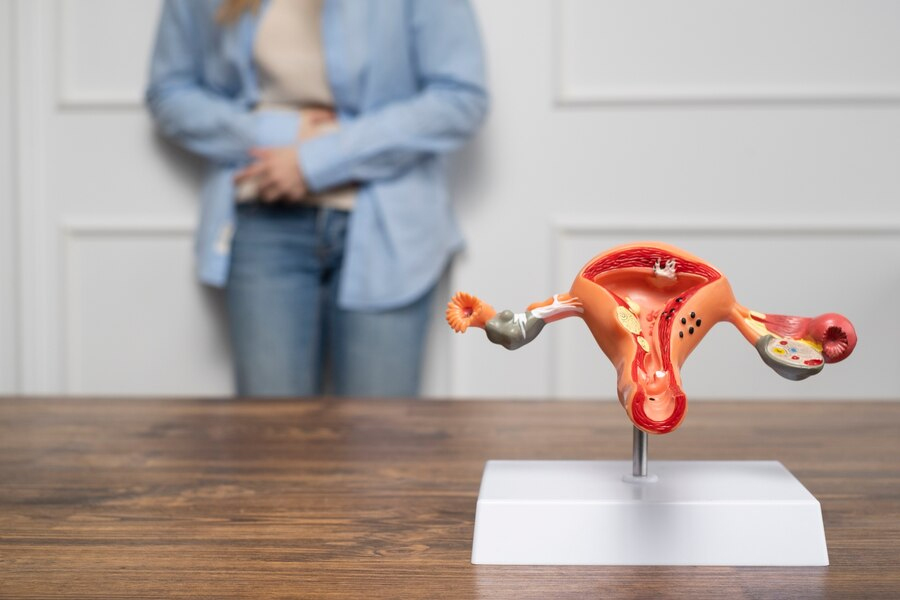
Women experience a number of reproductive issues throughout their lifetime. Most of these conditions are either asymptomatic, undetected, or overlooked due to unawareness and sometimes negligence.
A growth in the uterus can be concerning for various reasons. Firstly, it does not necessarily cause any symptoms, leading to delayed diagnosis and poor treatment outcomes, and secondly, it can have various underlying causes, both benign as well as cancerous.
Table of Content:-
Also Read: Empowering Women's Health: Advances in Uterine Cancer Treatment
How To Know If Uterine Growths Are Cancerous…

According to Dr Deepika Alva, Consultant- Obstetrician and Gynaecologist, Motherhood Hospitals, HRBR layout, Bengaluru, there is no self-diagnosis to know if uterine growths are cancerous or not.
However, some signs might warrant a visit to your doctor, she says. These include:
- Abnormal vaginal bleeding
- Pain or pressure in the pelvic area
- Difficulty urinating
- Constipation
A doctor can perform a pelvic exam, imaging tests like transvaginal or abdominal ultrasound, MRIs, or CT scans, and potentially a hysteroscopy or endometrial biopsy to determine the nature of the growth.
Benign Uterine Growths Are More Common

“Uterine growths are more likely to be benign than cancerous,” says Dr Alva.
Uterine fibroids, or leiomyomata, are the most common benign tumours affecting women, according to StatPearls Publishing.
Fibroids are growths made of smooth muscle cells and fibrous connective tissue that develop in the uterus.
Dr Alva says, “The exact causes of benign growths are unknown, but factors like hormone (oestrogen and progesterone) imbalances, genetics, lifestyle choices, and other medical conditions like obesity might play a role in their development.”
It is important to note that uterine fibroids can be asymptomatic, particularly in the early stages. However, in certain cases, there may be indications of growth, which include:
- Vaginal bleeding
- Abdominal pressure
- Pelvic pain
- Pressure on the bladder with frequent or even obstructed urination
- Pain during intercourse
- Reproductive problems such as infertility, miscarriage, or premature labour
- Pressure on the rectum with pain while passing stool
Can Benign Growths Become Cancerous If Left Untreated?

Dr Alva says, “The chance of benign uterine growth turning cancerous is very low. Uterine fibroids, for instance, have a one in 350 chance of becoming cancerous.”
However, she adds that rapid growth or development after menopause may need a doctor’s evaluation as polyps have a small risk of becoming cancerous, especially in postmenopausal women or those with a history of abnormal uterine bleeding.”
Also Read: Women Must Know These Things on Uterine Fibroids
Treatment Options
Treatment for benign growths depends on factors like size, symptoms, and the individual situation. It also varies depending on the underlying cause of the condition.
In the case of uterine fibroids, some options include hormonal therapy, minimally invasive procedures like uterine artery embolisation that can shrink fibroids, or surgical options like myomectomy, i.e., the removal of fibroids while preserving the uterus, polypectomy, i.e., the removal of polyps, or hysterectomy, i.e., the complete removal of the uterus in severe cases.
If tests reveal the presence of cancerous tumours (uterine or endometrial cancer), then doctors may recommend surgeries like a hysterectomy. Other treatments include chemotherapy, radiation therapy, hormone therapy, immunotherapy, and targeted therapy.
Lastly, Dr Alva emphasises the need for regular check-ups and monitoring to evaluate changes in size or symptoms.
Also watch this video
How we keep this article up to date:
We work with experts and keep a close eye on the latest in health and wellness. Whenever there is a new research or helpful information, we update our articles with accurate and useful advice.
Current Version